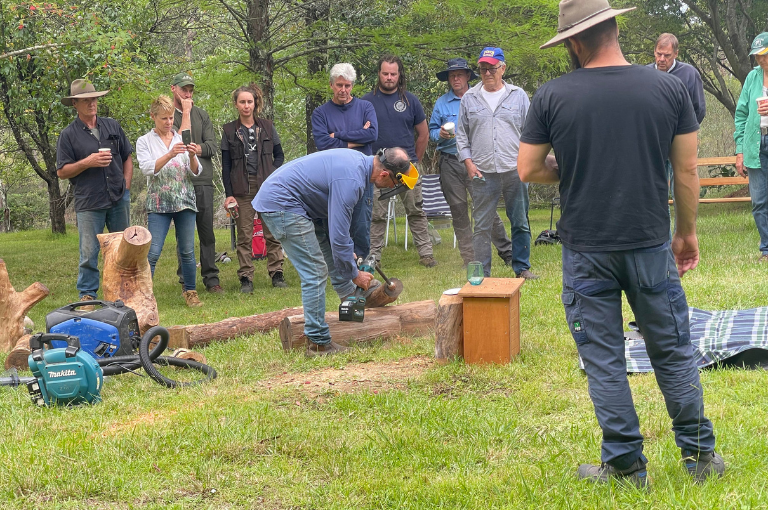
Artificial tree hollows are being carved around the Hawkesbury region to replace homes for wildlife lost in the Black Summer bushfires.
Hawkesbury-based non-profit Mountains for Wildlife (MFW) is working with an experienced arborist to carve hollows directly into trees and offcuts of wood using a Hollowhog. Offcuts are hoisted into the canopy to provide homes for tree-dwelling mammals while others are left on the forest floor for ground-dwelling animals.
The Hollowhog is a unique carving tool invented by biologist Matt Stephens to create habitat for hollow-dependant wildlife in living and dead trees.
An estimated 300 native species in Australia rely on tree hollows to nest and shelter in including 17% of our birds and 42% of our mammals.
An ecologist was engaged to ensure the hollows meet the needs of the local wildlife they are targeting. These include threatened gang-gang cockatoos, spotted-tailed quolls and feather-tailed gliders.

The hollow homes are being funded through a partnership between the Great Eastern Ranges and WIRES to support the post-fire recovery of wildlife in the Hawkesbury-Nepean and other impacted landscapes.
Members of the community were involved in creating the hollow homes, while local arborists were trained on how to use the Hollowhog in the hopes that they will employ the tool in the future.
With trees having to reach an age of at least 100 years before hollows start to form, longer for the larger hollows needed to house animals like powerful owls, the tool is a gamechanger.
“We can’t create a way to age the trees, so we brainstormed around the quickest and most efficient way to replace the hollows lost during the bushfires and came across the Hollowhog,” says Alison McCarthy-Phillips, Mountains for Wildlife.

Smaller hollows can be carved in less than an hour, speeding up the natural process without harming the trees.
Alison says they took into account a number of safety and other considerations when planning the activity, such as only creating hollows in parts of the tree where natural breakdown is already starting and ensuring the tool is sterilised between trees.
“The benefit of the Hollowhog is that now that we have purchased the tool and been trained on how to use it, in partnership with arborists, we can create as many wildlife homes as we like. And more as we need them in the future,” says Alison.
Hollow and trail cams have been installed to see what animals take up residence.
As part of Glideways, Flyways and Stepping Stones in the Hawkesbury, MFW has also been engaging local landholders and the community in bush regeneration, planting, weeding, citizen science and research activities.



 Media release
Media release